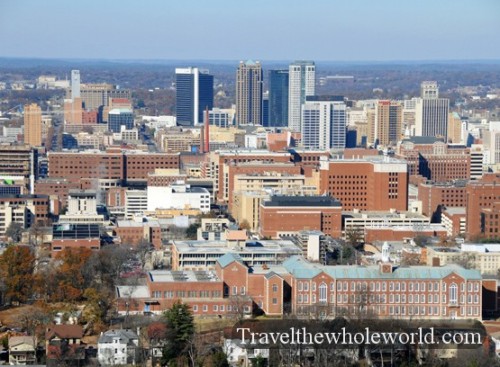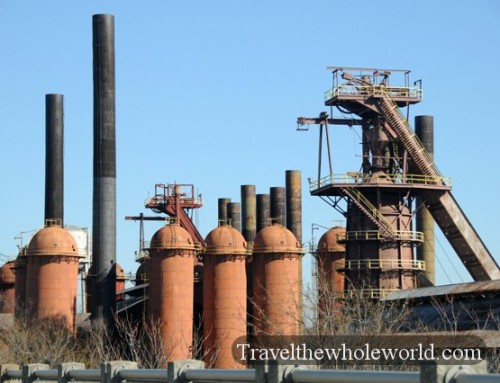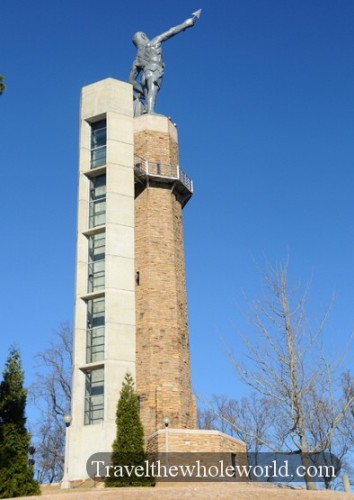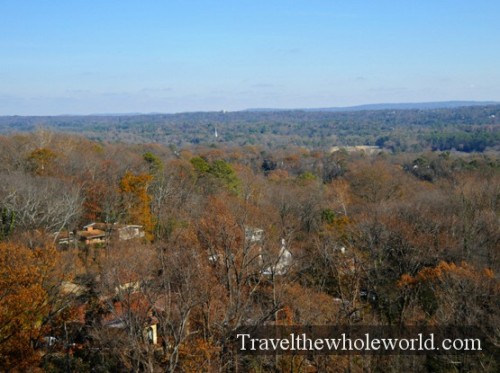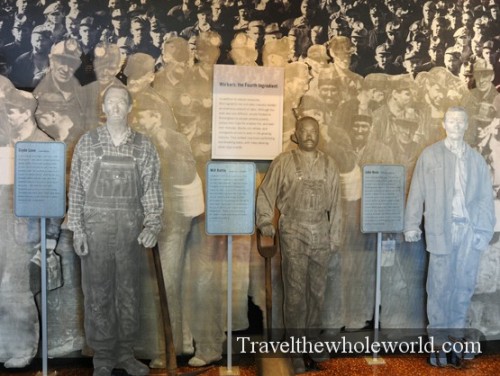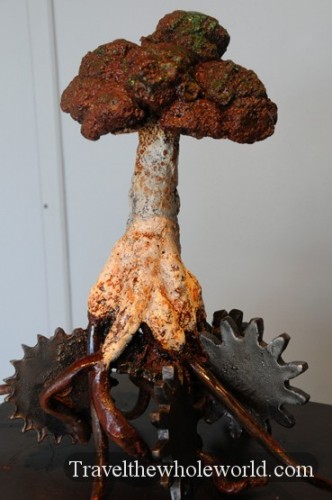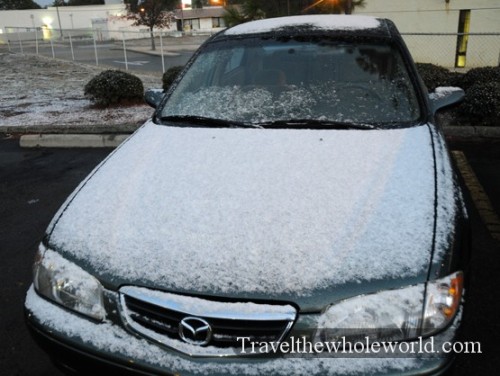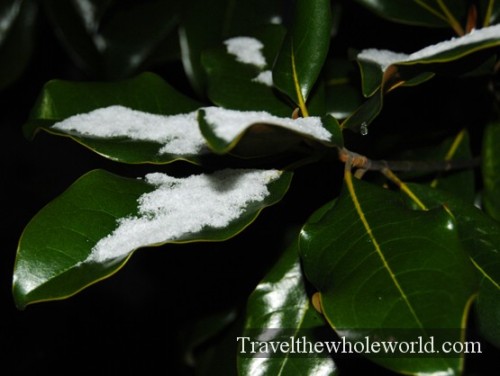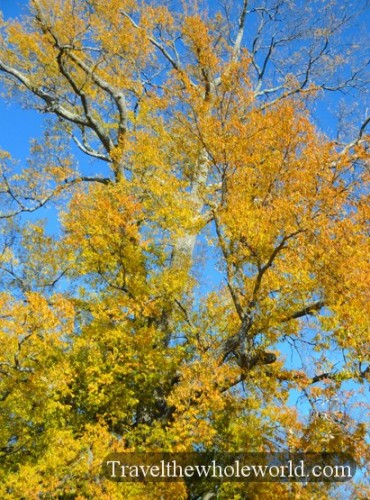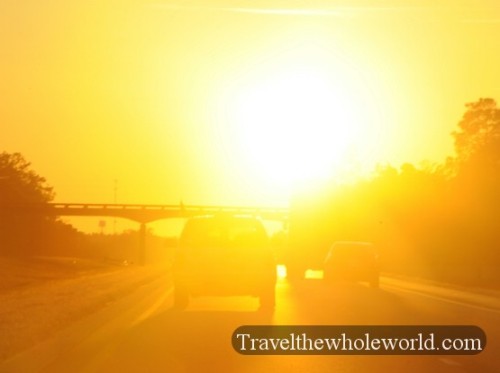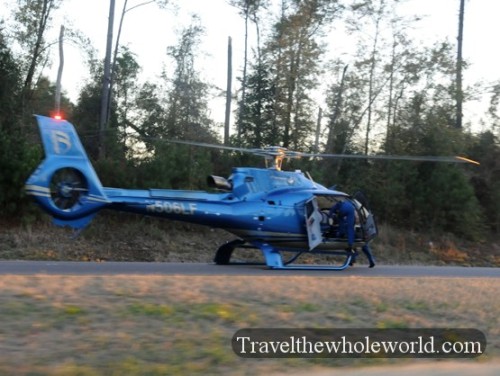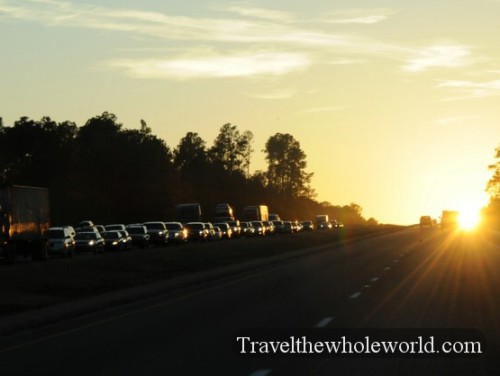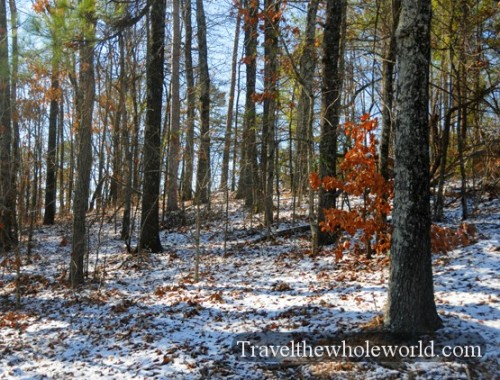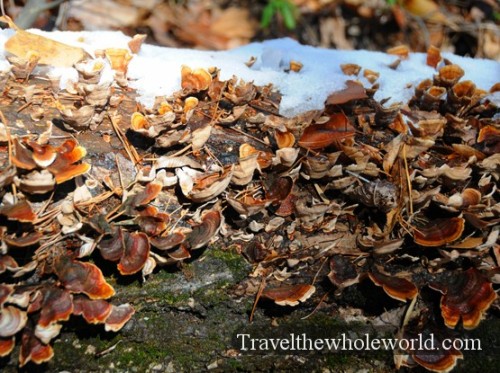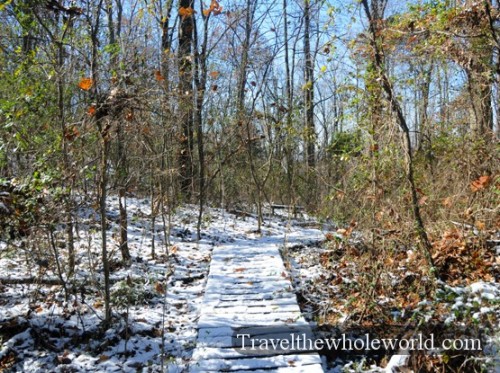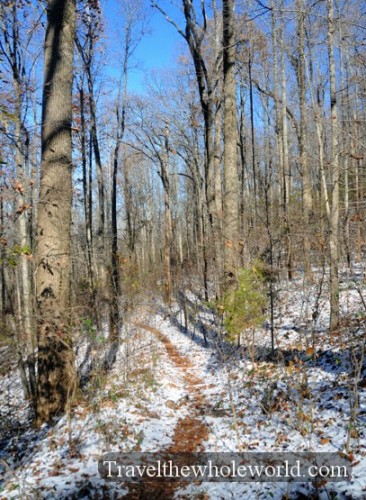Visiting Birmingham
Birmingham, Alabama’s largest city, sits in the northern part of the state and is home to around a quarter of a million people. While I personally find Montgomery more interesting, Birmingham has its own character and history, most notably in its iron and steel industry. During World War II, the city’s metal works and factories played a vital role in producing war materials. Even today, Birmingham remains a major manufacturer of iron and steel. The museum on the left in the photo below is dedicated to this history, and the Iron Man statue atop Vulcan Park is one of the city’s most recognizable landmarks. I took the city view from Vulcan Park itself—looking beyond Birmingham, the landscape quickly turns into open countryside.
Above are some scenes from Vulcan Park and its museum, named after the Roman god of fire and forge. The museum tells Birmingham’s story, beginning with its early mining days, through the city’s growth, struggles, and resilience during wars and economic downturns, all the way to modern times. The Vulcan statue is impressive not only for its symbolic significance but also for its size—standing at 17 meters (56 feet) tall, it is the largest cast-iron statue in the world, weighing around 100,000 pounds. From here, you also get some of the best panoramic views of Birmingham.
Inside the Vulcan Museum, you’ll also find exhibits like these metal artworks, all created by local high school students. There were about a dozen pieces on display, each with its own creative interpretation of the city’s industrial heritage and the forge that inspired its growth.
When I visited in late December, I was lucky to witness a rare snowfall in Birmingham. Winters here are usually mild, with average highs in the 50s (°F), so snow isn’t common. This particular snowfall was light but enough to cover the ground and trees, transforming the city and surrounding landscapes into something you’d expect much farther north.
Heading farther south afterward, the temperatures quickly warmed up—by the time I left Birmingham, I was back in jeans and a T-shirt. Even though most trees had shed their leaves, some still held on to autumn colors in late December. The photo on the right was taken just two days after the winter solstice, and while the low sun was blinding on the road, I can only imagine how intense the heat must get here in the peak of summer.
On my drive south, I passed a serious accident on the opposite side of the highway. Several vehicles were wrecked, and a medical helicopter had landed directly on the road to assist. It was a stark and sobering reminder that even the most scenic drives can turn dangerous in an instant.
Returning to the northern part of the state, the snow brought a different beauty to Alabama’s trails and forests. While most wildlife was tucked away for winter, the stillness of the snow-covered landscape made for a peaceful hike. I explored two different trails here, each winding deep into the woodlands, and plan to return in the summer for backpacking when the forest is alive with greenery and wildlife.
